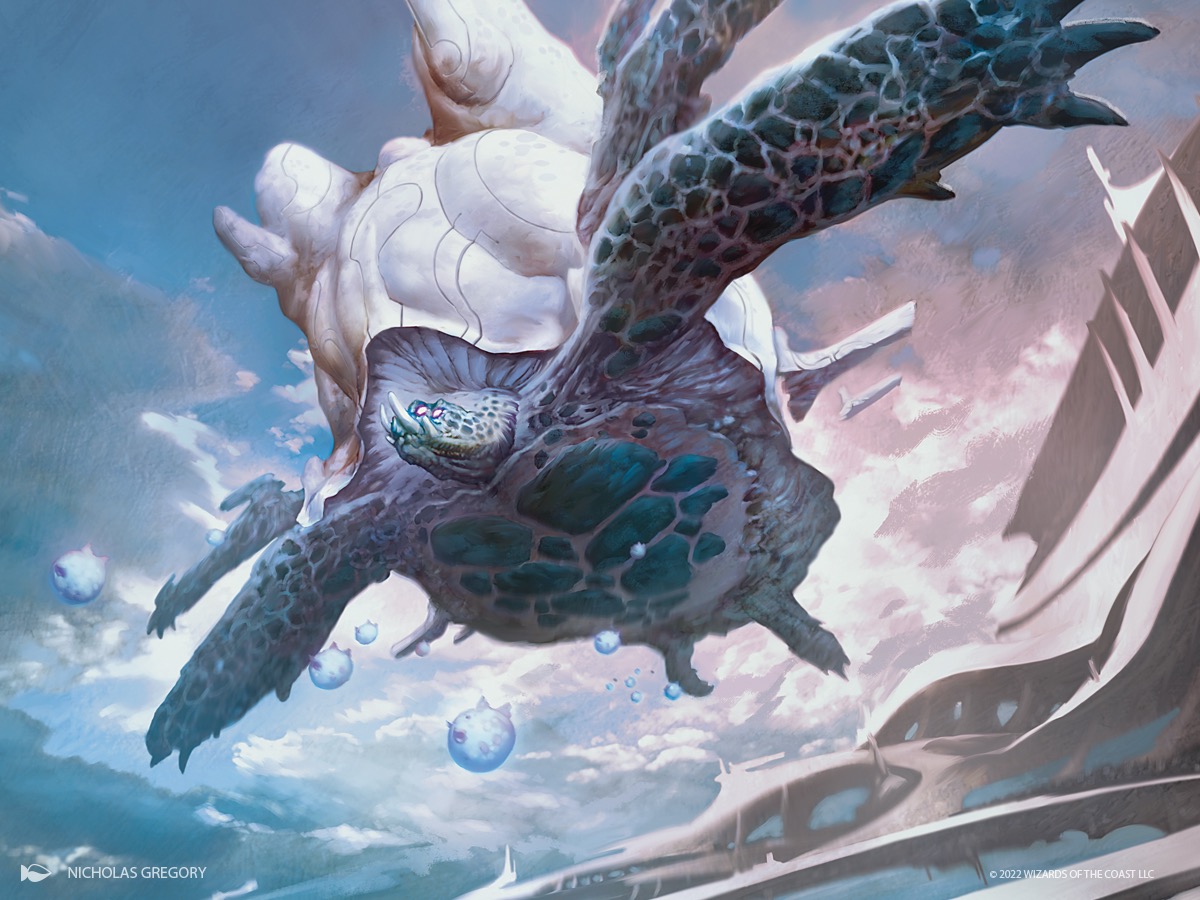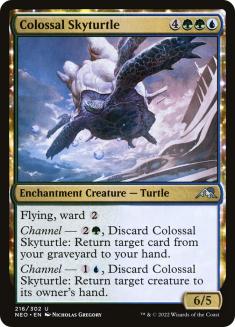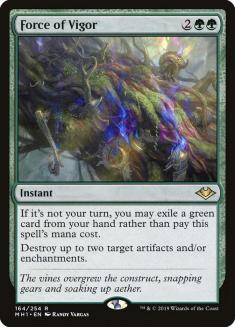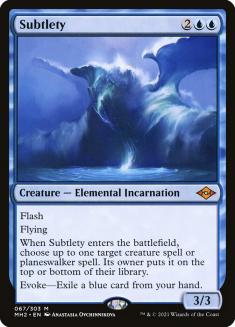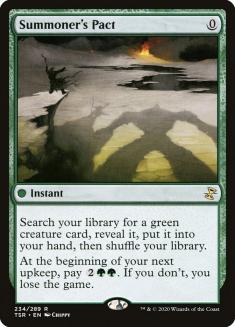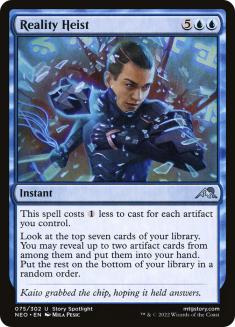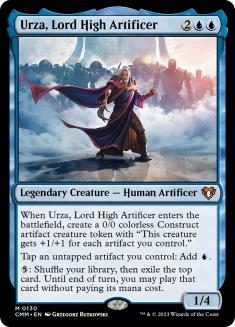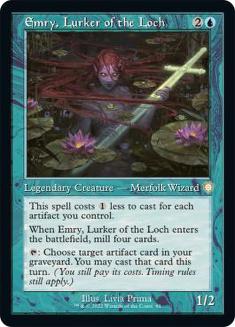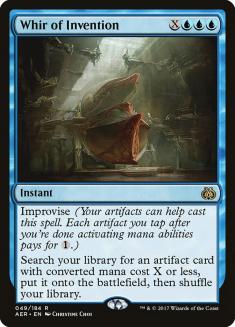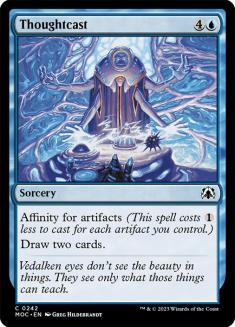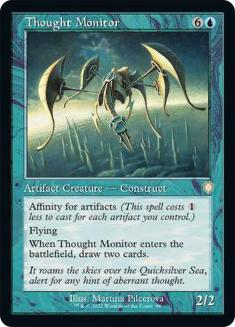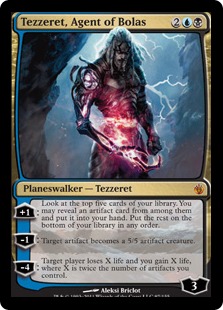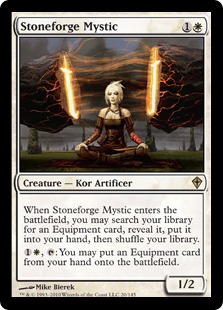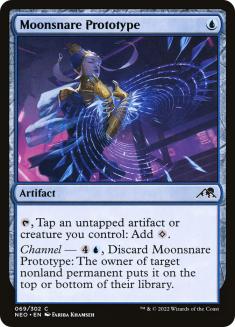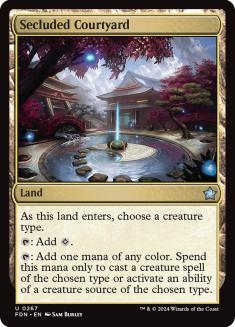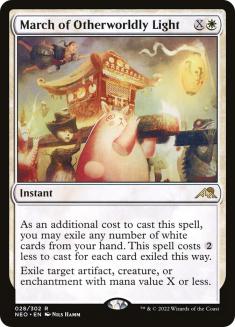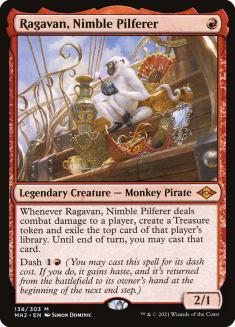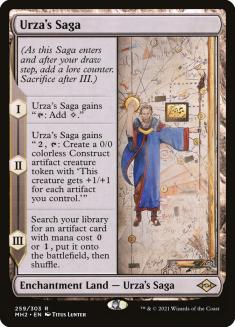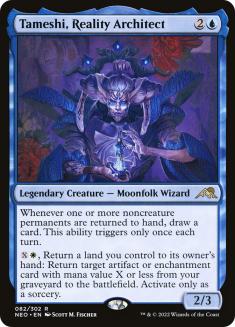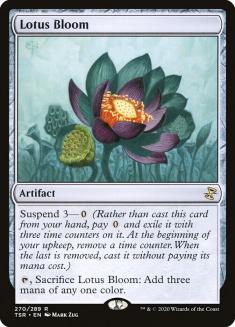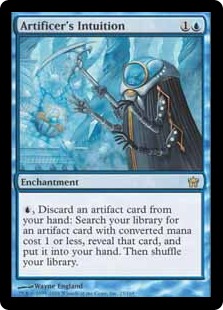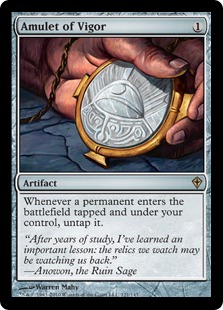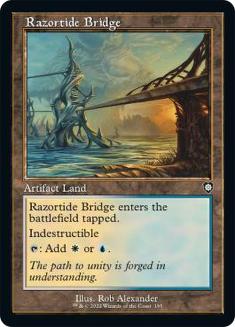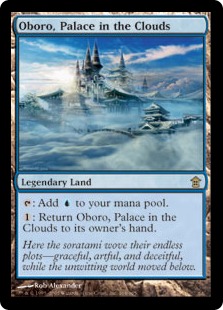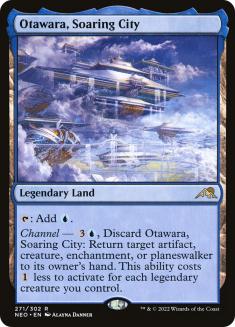Kamigawa: Neon Dynasty is a deep set with a lot of playables but some safe bets. I wrote full pieces on Boseiju, Who Endures and Lion Sash, and I know I will see those scattered through Modern for a long time to come. When my colleagues and I make our Top 5 predictions for this set today, I expect a consensus for the #1 slot.
Luckily, there’s a deep bench of Modern contenders whose prospects are less clear.
Colossal Skyturtle: Maybe
Colossal Skyturtle does a bit of everything for Living End. You have room for some number of creatures that bin themselves for two mana — Waker of Waves in the stock list, Titanoth Rex in the green-heavy Temur version — and some noncreature interaction in the maindeck. Skyturtle is narrower than Brazen Borrower, missing popular anti-cascade measures like Teferi, Time Raveler or Chalice of the Void but hitting nuisances like Thalia, Guardian of Thraben or Eidolon of the Great Revel without being caught by those itself. It lets you keep up with the fastest draws from some linear decks — Orzhov Hammer (Lurrus) can kill you on Turn 3 before you can cast Living End on the draw — and lets you threaten interaction without committing to a cascade spell.
Both channel abilities let you cascade again — green buys back Violent Outburst while blue bounces Shardless Agent — and the Regrowth effect can let you cascade for the first time if one of these cards was discarded. If you have to play a more interactive game, returning Force of Negation or an evoke creature gives you useful ammunition.
The most important part of Colossal Skyturtle may be its mana symbols. Many Living End lists have flirted with Endurance and Force of Vigor to add even more free interaction — the green-heavy lists have enough green cards to make these reliable, but the stock lists absolutely do not. When the vast majority of your green cards are the cascade cards you absolutely need every game and can rarely afford to pitch, you had better be ready to pay the sticker price for that Endurance. Skyturtle lets you smuggle more green cards into your deck without diluting your blue card count for your other pitch spells.
Colossal Skyturtle joins the long list of cards inevitably gathering dust in the Amulet Titan ‘playables’ box. Most of these never see the light of day — are you sure you’re ever going to get that Mystic Snake? — but Skyturtle has some unique uses here. Turning Summoner’s Pact into a cheap bounce spell may save you when you need to break the emergency glass, and drawing it naturally lets you buy back a Primeval Titan or Summoner’s Pact. Unlike in Living End, the stretch goal of casting Colossal Skyturtle is actually realistic here.
Reality Heist: Miss
A set like this tries to grab your attention with flashy artifact payoffs, and I’ll take the plunge with some of those shortly. Ultimately, these all have to compete with a long list of rewards for playing a bunch of artifacts:
It’s tougher than ever to justify playing clunky, expensive cards in Modern, and there’s no shortage of those even within the narrow scope of an artifact-heavy deck. As you scan the list, you realize that, with a partial exception in Nettlecyst, none of the most appealing payoffs are actually artifacts. The artifacts themselves aren’t inspiring; they’re a means to an end.
With that in mind, I’m very skeptical of Reality Heist. You need enough cheap artifacts to make its cost reasonable (and even with a lot of these it still competes with Thought Monitor) and enough high-impact artifacts that it’s worth casting in the first place, and then you still need to justify it over any of these other options. This is more tempting if your deck has a build-around namesake artifact like Krark-Clan Ironworks or Paradox Engine, but one of those is banned and the other is nowhere to be found in Modern.
Moonsnare Prototype: Hit
With that in mind, I’m far more excited about Moonsnare Prototype as the cheap artifact and mana acceleration these decks desperately need. Urza’s Saga has taught us all to appreciate Springleaf Drum — a version of this effect that can actually be found with Saga — but Prototype is much less restrictive for the decks in this space that would want it. A very specific type of artifact deck wants Memnite; many more want Mishra’s Bauble. This sets up Turn 3 Urza, Lord High Artificer (or a new contender in Tezzeret, Betrayer of Flesh), and the channel ability on redundant copies is a good mana sink for an active Urza.
If you’re interested in the Thopter Foundry + Sword of the Meek combo that pairs so well with Urza, Prototype lets you curve out with that combo manually while casting another spell or threatening a Foundry activation on Turn 2 and creating two tokens rather than one on Turn 3. If Kamigawa: Neon Dynasty does revive old artifact decks or spawn new ones, cheap enablers like this and Experimental Synthesizer will deserve most of the credit.
Secluded Courtyard: Miss
This isn’t a ‘miss’ in the same way as the others; I don’t think anyone has specific expectations for this card that it will fail to meet. For many, this will be a way to build their preferred tribal deck like Five-Color Humans without having to make a substantial investment in Cavern of Souls (and regretting it the moment the first Fury is put on the stack against you). It will certainly do the job there.
I’m not convinced it opens up much new ground beyond that. Most of the tribes that span the full five colours in Modern have a tribe-specific land already, but it’s the creatures, not the lands, holding them back…
If you do want a dozen copies of Cavern of Souls, Secluded Courtyard is an upgrade to the likes of Ancient Ziggurat, as it can actually cast Aether Vial or crack a Horizon Canopy. Courtyard is more flexible than Unclaimed Territory, as its coloured mana can activate abilities, but building your manabase in this way in the first place means you can’t support creatures with those abilities if that’s a big part of the card’s appeal. I wish I could activate Horde of Notions in the full Five-Color Elementals deck, but Cavern of Souls puts that out of reach.
Meanwhile, a more modest manabase in fewer colours will likely default to the fetchland + shockland setup or the Seachrome Coast / Botanical Sanctum cycle ahead of these lands, with Cavern of Souls as the automatic choice if you want any of these.
March of Otherworldly Light: Hit
This card doesn’t replace Prismatic Ending. It’s not ‘just a worse Prismatic Ending’ either, and that wouldn’t rule it out anyway; Prismatic Ending was one of the most important cards in a revolutionary set, and there’s a lot of room for a removal spell to be worse than Ending and still see a lot of play.
Ending is so crucial because it has so many strong targets across the board. Against Orzhov Hammer (Lurrus) you want to Ending every Sigarda’s Aid, Puresteel Paladin, and Colossus Hammer you see, but one Ending can’t hit all of them and sometimes can’t hit any of them if the opponent holds all these pieces back for one big turn. March is an instant-speed way to tag any of these, albeit with some inefficiency.
This trade-off is certainly welcome against Ragavan, Nimble Pilferer. The effectiveness of Prismatic Ending dropped considerably in the first weeks with Modern Horizons 2 as players started to dash Ragavan repeatedly rather than exposing it to sorcery-speed removal. Solitude offers the controlling white decks an instant-speed answer, but you don’t want to toss a card away and lose an important tool in longer games just to stave off Ragavan. March of Otherworldly Light can be the clunky but effective removal that lets your other interaction shine elsewhere.
The strongest selling point for March is that it’s a one-mana answer to Urza’s Saga, a bane of reactive strategies that demands specialized answers like Spreading Seas. March is a generally appealing reactive card that can be used proactively to explode Urza’s Saga and stunt the opponent’s development.
This isn’t a game-changer or a four-of in any deck with white mana; it’s a useful addition to the removal roster in Modern. Yorion decks that want a higher density of removal will be especially pleased to sleeve this up.
Tameshi, Reality Architect: No Clue
This is a deeply strange and intriguing card. We’re used to seeing some form of ‘this can only happen once each turn’ as a safety valve against loops or other nonsense. That constraint shows up on Tameshi’s first ability but not the second, inviting you to find ways to break it wide open.
The combo with Lotus Bloom is brimming with potential, letting you launder your lands into a giant burst of mana. The problem is that Lotus Bloom has aged poorly as a card in Modern — the linear decks can win the game or put it out of reach before Bloom can end its suspension and constant menaces like Teferi, Time Raveler and Chalice of the Void trample on Lotus Bloom as collateral damage. You can find other ways to uproot Lotus Bloom, like Whir of Invention, but you want a naturally drawn Lotus Bloom to do good work for you, ideally even without Tameshi.
If you want to be a combo deck, Tameshi can take you to some wild places.
As it so often does, my mind immediately jumped to Artificer’s Intuition as a setup card. It discards Lotus Bloom or digs up the first copy that you can then cycle for a payoff for all the mana Tameshi will bless you with. This is a good start, but Intuition also sets up a deterministic kill by itself if you’re willing to devote the slots to it.
Consider this sequence:
Turn 1. Play a Modern Horizons 2 artifact land (say, Razortide Bridge).
Turn 2. Cast Artificer’s Intuition.
Turn 3. Activate Intuition up to three times, discarding Lotus Bloom at some point.
Turn 4. Make a land drop and cast Tameshi. Pay W and bounce a land to return Lotus Bloom. Sacrifice Lotus Bloom for WWW.
Repeat this step up to twice, making blue or white mana as required (up to seven mana floating, at least one land left).
Activate Intuition until you have three copies of Amulet of Vigor between your hand and graveyard and two Bridges in your graveyard. Cast the Amulets or return them with Tameshi (ensuring you have one land for a final Tameshi activation).
You can now demonstrate a loop:
With three Amulets on the battlefield, pay W and bounce Razortide Bridge to return another Razortide Bridge. The Amulet triggers let you produce three mana (say, UUW) with Bridge.
Discard the bounced Bridge to find something with Intuition (UW floating).
Activate Tameshi to bounce the returned Bridge and get back the newly discarded Bridge (U floating).
Each iteration gains mana and a card. You can substitute the third Amulet for Altar of the Brood to stay mana-neutral while milling their library, or just add this step once you have infinite mana + cards.
There are a ton of moving parts here, but Artificer’s Intuition directly finds all of them by itself, with help from perhaps the best card in all of Modern:
You don’t need nostalgia for the Krark-Clan Ironworks experience to get value from Tameshi. As Ari outlines, Tameshi fits snugly into the proven formula of Urza’s Saga with the generic good cards.
Once you go looking for cards you already want to play that synergize with Tameshi, you start to see them everywhere. Oboro, Palace in the Clouds, one of the original Kamigawa legendary lands (better known as the only playable card in Saviors of Kamigawa), is a free addition to any Tameshi deck that lets you cash in a land drop to trigger Tameshi on the opponent’s turn at any time. Tameshi lets Teferi, Time Raveler give you an even bigger reward for setting your opponent back further (while protecting Tameshi on your turn).
Creatures (12)
Planeswalkers (4)
Lands (30)
Spells (34)

Ultimately, I think the likely home for Tameshi isn’t a radically new combo deck but a more fluid midrange deck where it’s yet another flexible threat.
The fact that you can go this far down the rabbit hole and still have no idea if a card is effective or even playable is an encouraging sign — and this is just the tip of the iceberg here. I hope some sleeper pick from the set that isn’t even on my radar yet takes us all by surprise before too long.

